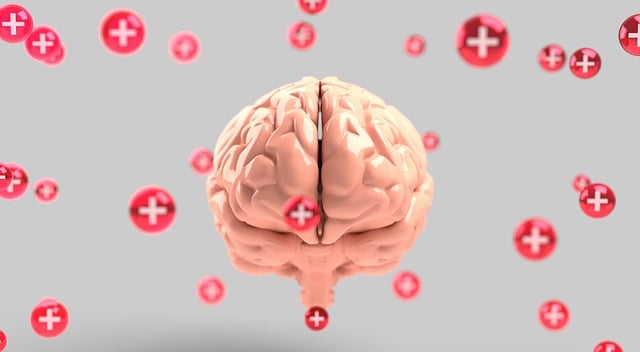Therapy for adolescent teens trauma requires a multifaceted approach addressing identity formation, peer pressure, academic stress, and past traumatic events. Mental health professionals must foster empathy, implement tailored self-care routines, and incorporate stress reduction methods. Proactive risk management planning includes identifying traumatic experiences through open communication and active listening. Techniques like trauma-focused cognitive behavioral therapy (TF-CBT), mindfulness, and reframing are vital for processing memories, regulating emotions, and rebuilding coping mechanisms. Continuous evaluation, adaptability, and evidence-based practices ensure optimal support and positive outcomes for adolescent clients navigating trauma.
Mental health professionals face unique challenges when supporting adolescent clients, especially those who have experienced trauma. This article explores essential risk management planning for therapists working with teens. We delve into understanding the specific risks in adolescent therapy, identifying potential traumatic events, and developing tailored strategies. From comprehensive risk assessment to continuous evaluation, learn effective methods for mitigating trauma-related risks. Discover practical steps to ensure safe and adaptive practices when treating teen clients navigating complex emotional landscapes.
- Understanding the Unique Risks in Adolescent Therapy
- Identifying Potential Traumatic Events in Teen Clients
- Developing a Comprehensive Risk Management Plan
- Strategies for Mitigating and Responding to Trauma-Related Risks
- Continuous Evaluation and Adaptation for Effective Risk Planning
Understanding the Unique Risks in Adolescent Therapy

Adolescent therapy presents distinct challenges and risks that mental health professionals must be adept at navigating. Teens often grapple with a myriad of issues, including identity formation, peer pressure, academic pressures, and trauma. Unlike adult clients who may have a more established sense of self, adolescents are still in the process of understanding and defining their place in the world. This developmental stage can make them particularly vulnerable to emotional volatility, making risk management planning crucial.
Professionals working with adolescent teens must develop strategies that foster empathy building, as teenagers often struggle to articulate their feelings and experiences. Implementing effective self-care routine development for better mental health is another critical aspect. By incorporating stress reduction methods tailored to this demographic, therapists can create a safe space, ensuring sessions remain productive while mitigating potential risks associated with trauma exposure in therapy.
Identifying Potential Traumatic Events in Teen Clients

For mental health professionals working with adolescent teens, identifying potential traumatic events is a critical step in risk management planning. Teen clients may have experienced a range of challenges that could trigger trauma responses, including abuse, neglect, academic pressures, peer relationships, or family conflicts. Recognizing these events is crucial as it enables therapists to tailor therapy sessions for adolescent teens trauma effectively. By understanding the specific traumatic experiences, professionals can incorporate coping skills development and stress reduction methods that address these issues directly.
Effective risk management requires a proactive approach in assessing and addressing potential triggers. Therapists should create a safe space where clients feel comfortable disclosing their experiences. This can be facilitated through open-ended questions and active listening techniques. Once identified, these traumatic events can guide the development of mental wellness coaching programs, offering teens healthy coping mechanisms to manage stress and promote mental wellness.
Developing a Comprehensive Risk Management Plan

Mental health professionals must develop a comprehensive risk management plan to effectively navigate the complex landscape of supporting adolescent teens with trauma. This involves integrating various strategies tailored to address the unique challenges presented by this vulnerable population. A robust plan should encompass not just crisis intervention guidance, but also proactive empathy building strategies and compassion cultivation practices. By incorporating these into daily practice, professionals can foster a safe and supportive environment that enhances therapeutic outcomes.
The plan must be dynamic, allowing for flexibility in response to individual client needs and emerging situations. It should include protocols for identifying and assessing risks, as well as clear steps for escalating interventions when necessary. Through regular review and updating, this framework ensures that mental health professionals are equipped with the knowledge and skills to provide compassionate and effective therapy for adolescent teens trauma.
Strategies for Mitigating and Responding to Trauma-Related Risks

Mental health professionals working with adolescent teens experiencing trauma must employ robust strategies to mitigate and respond to potential risks effectively. One key approach is integrating specialized therapy techniques tailored for this demographic, such as trauma-focused cognitive behavioral therapy (TF-CBT). This evidence-based method equips both the professional and the client with tools to process traumatic memories, regulate emotions, and rebuild coping mechanisms.
Additionally, fostering open communication channels is vital. Encouraging adolescents to express their experiences and feelings creates a safe space, bolstering trust and engagement. Burnout prevention strategies for healthcare providers are also essential co-benefits; practicing self-care, maintaining work-life balance, and employing effective communication strategies contribute to professionals’ resilience, ensuring they can consistently offer high-quality care over time. Positive thinking, fostered through techniques like mindfulness and reframing, can help both the professional and their clients navigate trauma’s aftermath with renewed hope and resilience.
Continuous Evaluation and Adaptation for Effective Risk Planning

Mental health professionals must embrace a dynamic approach to risk management planning, understanding that what works today might not be effective tomorrow. Continuous evaluation is key; regularly assessing client progress, treatment outcomes, and emerging research ensures strategies remain relevant and tailored to individual needs. This involves staying abreast of new therapeutic techniques, such as mindfulness meditation and emotional regulation skills, which can enhance traditional therapy for adolescent teens trauma. Adaptability allows professionals to incorporate evidence-based practices that foster self-esteem improvement and better coping mechanisms.
By regularly reviewing and adjusting risk management plans, professionals can anticipate changing circumstances and client needs, ensuring a proactive rather than reactive approach. This ongoing process enables them to navigate the complex landscape of mental health care, deliver optimal support, and ultimately promote positive outcomes for their clients.
Mental health professionals working with adolescent clients must be prepared to navigate complex emotional landscapes. By understanding the unique risks associated with adolescent therapy, identifying potential traumatic events, and implementing a robust risk management plan, therapists can create a safe environment. This involves adopting strategies to mitigate and respond to trauma-related risks effectively. Continuous evaluation and adaptation are key to ensuring that risk planning remains dynamic and aligned with each teen client’s evolving needs, fostering healthier outcomes in therapy for adolescent teens trauma.













